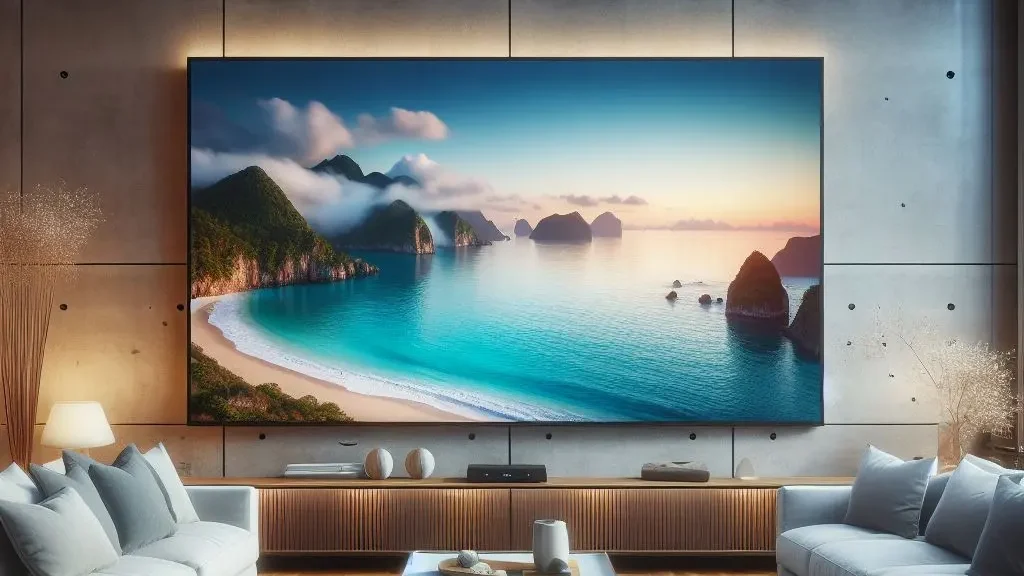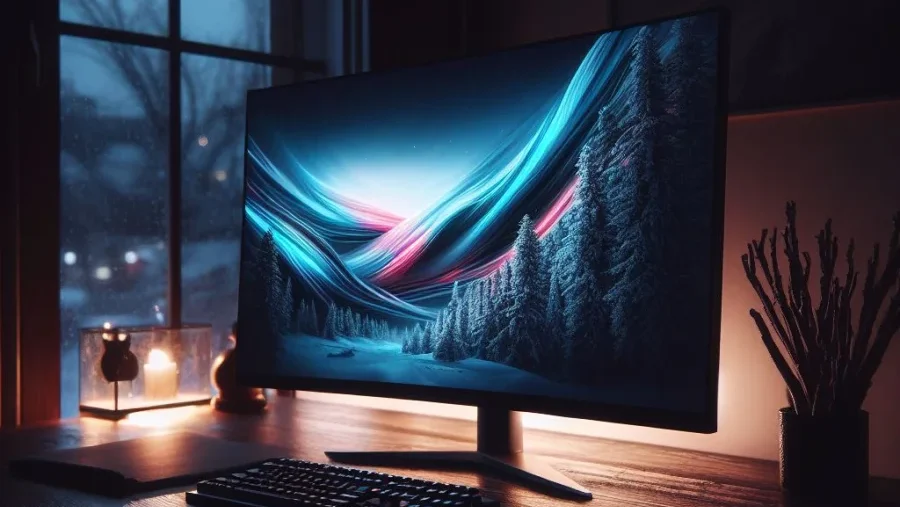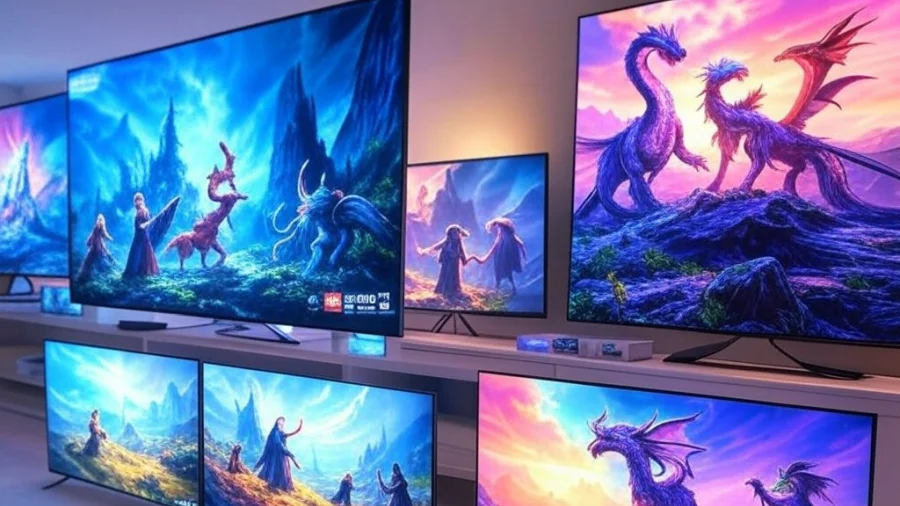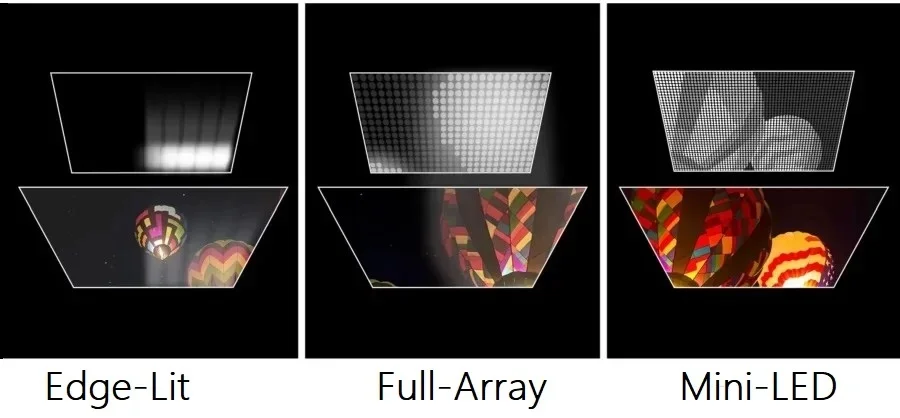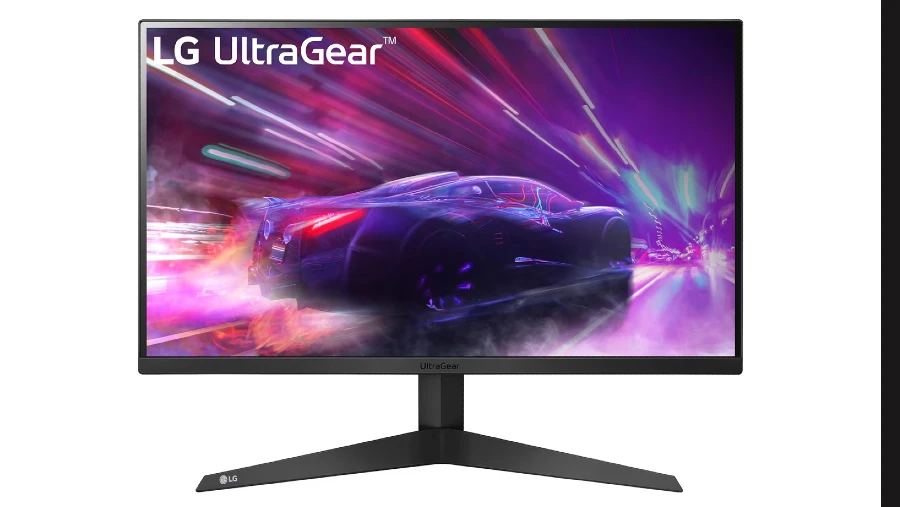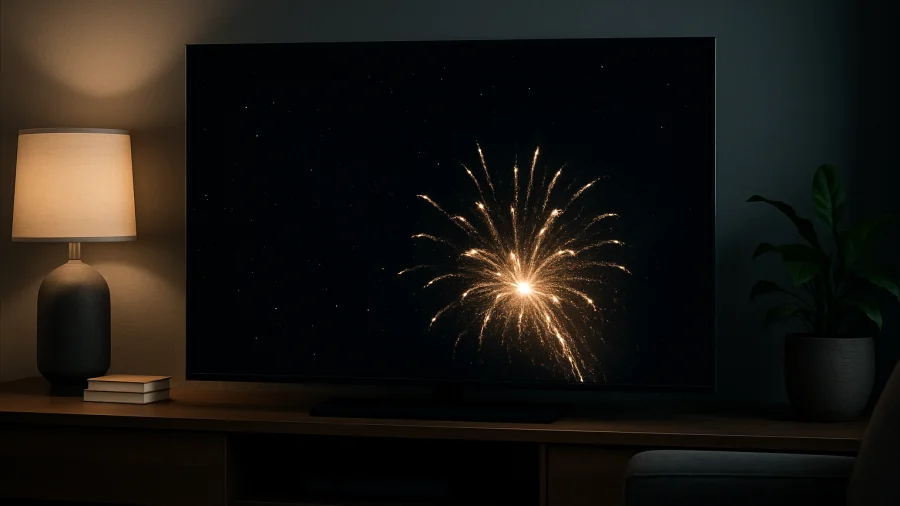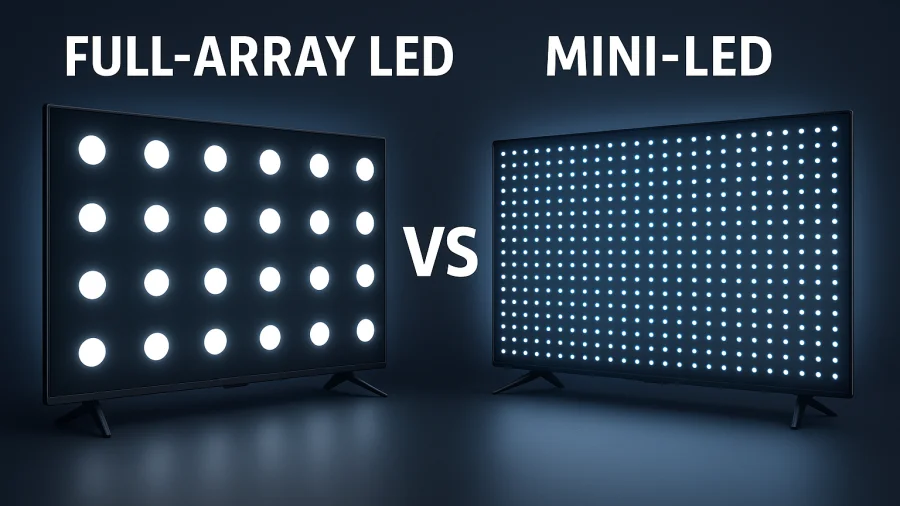
The quality of your TV’s picture hinges significantly on its backlighting system.
Backlighting is crucial for LCD (Liquid Crystal Display) TVs, dictating elements like contrast, brightness, and how deep the black levels appear.
The Full Array LED vs. Mini-LED discussion represents the cutting edge of this technology.
Full Array LED, or technically more accurate term Full Array Local Dimming (FALD), emerged as a substantial upgrade compared to older edge-lit LED TVs, offering much better picture control.
Now, Mini-LED represents the next evolutionary step in LCD backlighting, promising even more refined visuals and performance.
This article aims to provide a clear comparison between FALD LED and Mini-LED, detailing their underlying technologies, respective advantages, and potential drawbacks to help you decide which is better suited for your viewing habits and budget.
Understanding LED Backlighting Basics
LCD panels themselves don’t produce light; they act like shutters, controlling how much light passes through each pixel.
Therefore, they require a separate light source behind them, known as a backlight.
Early LCD TVs used CCFLs (Cold Cathode Fluorescent Lamps), later replaced by more efficient LEDs (Light Emitting Diodes).
LED backlights were initially implemented in two main configurations: edge-lit and direct-lit.

Direct-lit systems place LEDs directly behind the entire panel, potentially offering more uniformity but lacking precise control since they illuminate the screen uniformly, meaning all LEDs brighten or dim together depending on the content being displayed.
Edge-lit systems place LEDs along the sides, top, or bottom of the screen, which can sometimes lead to uneven brightness and less convincing black levels.
To significantly improve contrast and black level performance, local dimming was introduced. Local dimming allows specific zones or sections of the backlight to brighten or dim independently based on the picture content.
While local dimming can be applied to edge-lit TVs (often with limited zones), it is most effective when combined with a full array LED configuration, leading to the advanced system known as Full Array Local Dimming (FALD).
Full Array Local Dimming (FALD) LED Explained
Full Array Local Dimming (FALD) places LEDs directly behind the entire surface of the LCD panel, unlike edge-lit systems.
These LEDs are grouped into controllable zones.
The TV’s processor can then dim the LEDs in darker areas of the picture while keeping LEDs bright in lighter areas.
This results in significantly better contrast and deeper black levels compared to TVs without local dimming or with edge-lit local dimming.
The number of zones in a FALD TV typically ranges from dozens to several hundred.
While a major improvement, the relatively large size of traditional LEDs and the limited number of zones can sometimes lead to an effect called blooming or halo effect, where light from bright objects bleeds into adjacent dark areas.
Mini-LED Technology Unveiled
Mini-LED technology takes the FALD concept and refines it dramatically.
As the name suggests, Mini-LED uses LEDs that are significantly smaller – often measuring less than 0.2 millimeters.
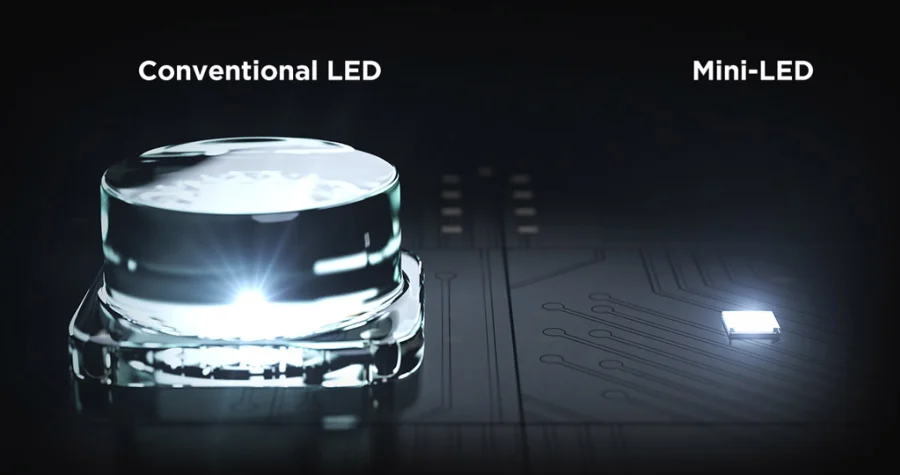
This miniaturization allows manufacturers to pack thousands, sometimes tens of thousands, of these tiny LEDs behind the LCD panel.
Consequently, the number of independently controllable dimming zones increases massively, often reaching into the thousands.
With many more, smaller dimming zones, a Mini-LED TV can control the backlight with much greater precision.
This leads to improved contrast, higher peak brightness, deeper black levels, and significantly reduced blooming compared to traditional FALD systems.
It’s important to remember that Mini-LED is still an LCD technology; it enhances the backlight but doesn’t change the fundamental way the LCD panel works (unlike OLED or Micro-LED).
Side-by-Side Comparison: FALD vs. Mini-LED
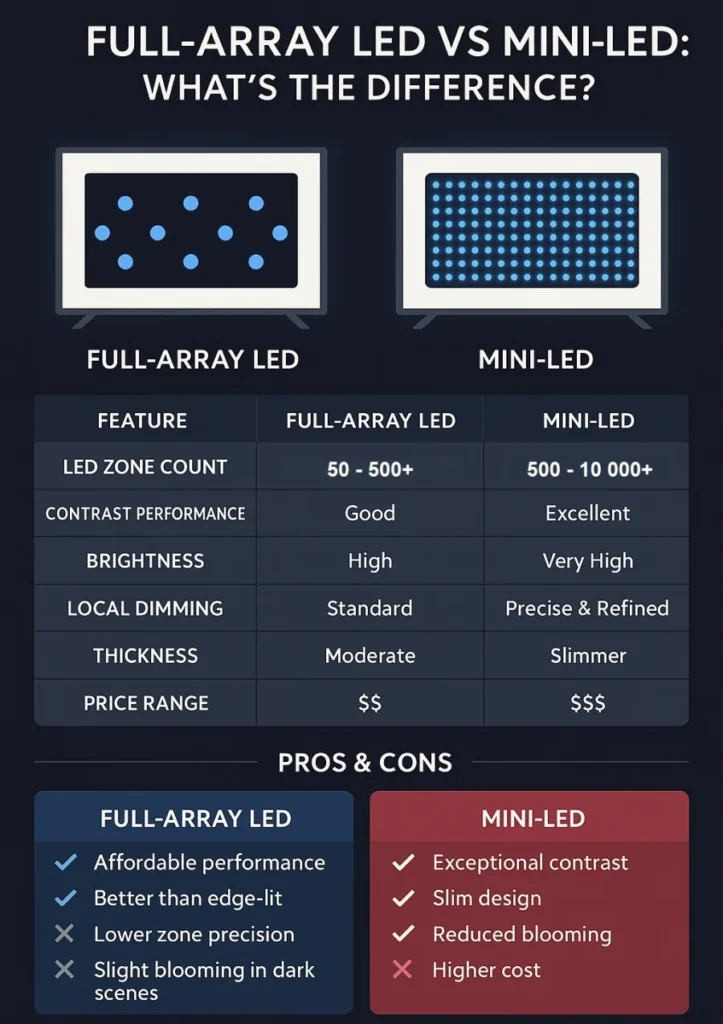
A key differentiator lies in the physical size of the light sources; FALD employs larger, conventional LEDs, whereas Mini-LED utilizes dramatically smaller ones.
This size difference directly impacts the quantity of LEDs packed behind the screen, with FALD typically using hundreds, while Mini-LED incorporates thousands, sometimes even tens of thousands.
Consequently, the number of independently controlled dimming zones varies significantly; FALD offers dozens to perhaps a few hundred zones, whereas Mini-LED technology boasts from hundreds to even tens of thousands of these zones.
Regarding illumination, both technologies can achieve high levels of brightness, yet Mini-LED often facilitates superior peak brightness due to its denser LED array and more sophisticated power management.
This granular control translates directly to contrast performance; FALD provides a commendable improvement over simpler backlights, but Mini-LED delivers far more precise and superior contrast control thanks to its multitude of zones.
A common artifact, blooming, is more noticeably present in FALD systems, while Mini-LED significantly mitigates this effect, offering cleaner transitions between bright and dark areas, though complete elimination isn’t always guaranteed.
Finally, concerning market positioning and price, FALD TVs generally occupy a more affordable mid-to-high tier segment, while Mini-LED TVs are typically designated as premium offerings commanding a higher cost.
Real-World Performance and Use Cases
These technological differences directly impact the viewing experience.
FALD
FALD TVs provide an excellent viewing experience for most users and are a significant step up from edge-lit or non-local dimming models.
They are well-suited for watching movies in moderately lit rooms, offering good black levels and improved image depth.
Gamers looking for strong picture quality, good contrast, and responsive performance without paying the top-tier premium may find FALD TVs a great balance.
Mini-LED
Mini-LED TVs are ideal for home theater enthusiasts and discerning viewers who prioritize the absolute best picture quality achievable from an LCD TV.
Their ability to reach high peak brightness and manage thousands of dimming zones makes them exceptional for HDR (High Dynamic Range) content, revealing stunning detail in both the brightest highlights and deepest shadows simultaneously.
For gamers, Mini-LED offers incredibly vibrant visuals, deep blacks enhancing atmospheric games, and often comes with the latest gaming features like high refresh rates.
Thanks to typically higher overall brightness, Mini-LED TVs also perform exceptionally well in bright living rooms, combating glare more effectively.
Future Trends and Conclusion
Mini-LED technology is rapidly becoming more common in mid-range and high-end TVs, gradually pushing traditional FALD down the price ladder or into lower-tier models.
The ultimate evolution beyond Mini-LED for self-emissive displays is Micro-LED, but this technology is currently extremely expensive and reserved for niche or commercial applications.
In conclusion, both FALD and Mini-LED offer significant improvements in LCD TV picture quality through sophisticated backlighting control.
FALD provides a great balance of performance and value, delivering impressive contrast and brightness for many users.
Mini-LED represents the current pinnacle of LCD backlight technology, offering superior brightness, contrast, and finer control, making it the choice for those seeking premium performance, especially for HDR content and bright-room viewing, albeit at a higher cost.
Your choice between Full Array LED vs. Mini-LED ultimately depends on your budget, viewing environment, and how critical ultimate picture fidelity is to your experience.
Q&A
Is mini-LED or full array better?
Mini-LED is generally considered an advancement over standard Full Array Local Dimming (FALD). While both use LEDs spread across the back of the screen with dimming zones, mini-LED uses significantly smaller LEDs. This allows for many more, much smaller dimming zones, resulting in finer control over brightness and darkness, leading to deeper blacks, higher contrast, and reduced blooming (halo effect) compared to traditional full array.
Is Sony full array LED the same as mini-LED?
No, they are distinct technologies within Sony’s lineup. “Full Array LED” typically refers to Sony’s traditional FALD backlight system with larger LEDs and fewer dimming zones. While technically a type of full array backlight, Sony designates its TVs using the much smaller, more numerous LEDs specifically as “mini-LED” (often paired with specific branding like XR Backlight Master Drive). Mini-LED represents Sony’s more advanced, higher-performance tier of LCD backlighting compared to their standard Full Array LED models.
Is full array LED better than QLED?
This comparison isn’t straightforward as they address different aspects of TV technology. Full Array LED (FALD) is a backlight technology focused on improving contrast and black levels through local dimming. QLED (Quantum Dot LED) is primarily a color enhancement technology using a layer of quantum dots to produce brighter and more vibrant colors. Many premium TVs actually combine both FALD backlighting and a QLED layer for excellent contrast and color. However, a FALD TV will generally offer better contrast than an edge-lit QLED TV.
Is Sony full array LED worth it?
Whether a Sony Full Array LED TV is “worth it” depends on your priorities and budget. These TVs generally offer very good picture quality, with strong contrast and black levels significantly better than edge-lit TVs. Sony is particularly renowned for its image processing, leading to excellent motion handling and upscaling. While often priced higher than some competitors, they provide a premium viewing experience that strikes a balance between performance and cost, sitting below the top-tier mini-LED or OLED models but offering a substantial upgrade over entry-level sets.
Read Next
